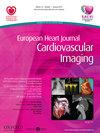Sex-specific impairment of cardiac functional reserve in HFpEF: insights from the HFpEF-Stress trial
引用次数: 0
Abstract
Abstract Funding Acknowledgements Type of funding sources: Foundation. Main funding source(s): DZHK Background Heart failure with preserved ejection fraction (HFpEF) has been observed to have a twice as high prevalence in women compared to men.(1,2) While predisposing risk factors are quite similar between the sexes(2,3), this study aimed to identify sex-specific pathophysiological features in HFpEF using state-of-the-art diagnostic approaches. Methods 75 Patients with exertional dyspnea, preserved ejection fraction (EF ≥ 50%) and signs of diastolic dysfunction on echocardiography were prospectively recruited in the HFpEF-Stress Trial. Patients underwent right heart catheterization (RHC), echocardiographic and cardiovascular magnetic resonance (CMR) imaging at rest and during exercise stress. HFpEF was defined according to pulmonary capillary wedge pressure in RHC (rest ≥ 15mmHg, stress ≥ 25mmHg), below these thresholds patients were classified as non-cardiac dyspnea (NCD). Results Main results are displayed in Figure 1. Compared to men, women with HFpEF revealed lower right ventricular (RV)-stroke volumes during exercise stress (f 38.1 vs. m 50.4 ml/m2 BSA; p = 0.011) but not with NCD. This was accompanied by a decreasing left atrial (LA) EF in women but not men comparing resting to exercise conditions (f −2.7 vs. m 2.5%, p = 0.020) and an impaired left ventricular (LV) filling (f 35.5 vs. m 44.2 ml/m2 BSA, p = 0.017) in women with HFpEF during exercise stress. These sex-specific differences were not present in NCD. The exercise-induced decrease in LA EF emerged as a predictor for HFpEF in women (OR 13.67 95% CIs: 3.03 – 62.14, p<0.001) with high diagnostic accuracy (AUC 0.83 95% CIs: 0.7–0.95). Conclusion Women with HFpEF demonstrate sex-specific functional alterations of RV, LA, and LV function during exercise-stress. The biventricular impairment suggests a complex interplay of both sides of the heart during the progression of HFpEF in women. This unique pathophysiology represents a sex-specific diagnostic target, which may allow early identification of women with HFpEF for future individualized therapeutic approaches.HFpEF患者心功能储备的性别特异性损害:来自HFpEF应激试验的见解
资金来源类型:基金会。研究背景:研究发现,保留射血分数的心力衰竭(HFpEF)在女性中的患病率是男性的两倍(1,2)。虽然男女之间的易感危险因素非常相似(2,3),但本研究旨在利用最先进的诊断方法确定HFpEF的性别特异性病理生理特征。方法前瞻性地招募75例运动呼吸困难、保留射血分数(EF≥50%)和超声心动图舒张功能不全的患者参加hfpef -应激试验。患者在休息和运动应激时接受右心导管(RHC)、超声心动图和心血管磁共振(CMR)成像。HFpEF是根据RHC的肺毛细血管楔压(休息≥15mmHg,应激≥25mmHg)来定义的,低于这些阈值的患者被归类为非心源性呼吸困难(NCD)。主要结果如图1所示。与男性相比,患有HFpEF的女性在运动应激时显示右室(RV)卒中容量较低(f 38.1 vs m 50.4 ml/m2 BSA;p = 0.011),但与NCD无关。与静息条件和运动条件相比,女性左房(LA) EF下降,而男性没有(f - 2.7 vs. m - 2.5%, p = 0.020),运动应激下HFpEF女性左室(LV)充盈受损(f 35.5 vs. m - 44.2 ml/m2 BSA, p = 0.017)。这些性别特异性差异在非传染性疾病中不存在。运动引起的LA EF下降是女性HFpEF的预测因子(OR 13.67 95% ci: 3.03 - 62.14, p<0.001),诊断准确性高(AUC 0.83 95% ci: 0.7-0.95)。结论HFpEF女性在运动应激时右室、左室和左室功能发生了性别特异性的改变。双心室损伤提示在女性HFpEF的进展过程中,心脏两侧的复杂相互作用。这种独特的病理生理学代表了一种性别特异性的诊断靶点,这可能允许早期识别患有HFpEF的女性,以便将来采用个性化的治疗方法。
本文章由计算机程序翻译,如有差异,请以英文原文为准。
求助全文
约1分钟内获得全文
求助全文

 求助内容:
求助内容: 应助结果提醒方式:
应助结果提醒方式:


